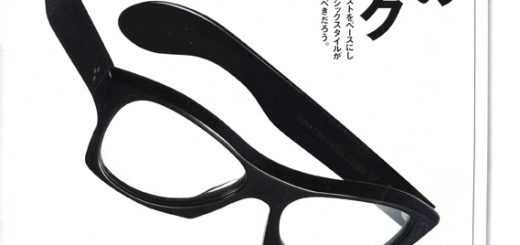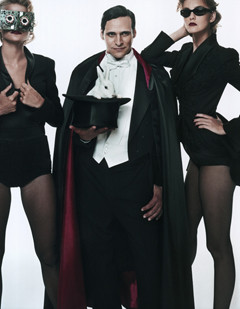What drives optical sales?
In a previous post, I looked back at Prada’s abortive attempt to control their own eyewear licensing in collaboration with De Rigo. When Luxottica subsequently took over the license in 2002, they promised to nearly quadruple Prada Eyewear’s lagging sales in one year. This raises an interesting question.
Had Prada’s stature with consumers, as a brand, plummeted during their own venture into eyewear? Had signing a contract with Luxottica immediately raised it four fold, so they could sell four times as much eyewear?
I’ve read some recent articles and opinion pieces talking up the importance of branding to the end consumer in the optical industry. It has some importance, no doubt, more in sunglasses than prescriptive optical, but what exactly is that importance?
Let’s put it into perspective: it pales by comparison to distribution.
Luxottica was able to get the most mileage out of their licenses because of their slow, calculated strategy of expansion, buying sales and distribution resources region by region. Much of this took place before the company took on its first license.
So distribution trumps branding.
This will be the key to LVMH and Kering Eyewear’s success or failure. But this, in turn, raises other questions.
So getting goods on the sales floor is of paramount importance. But once products reach the sales floor, how important is branding?
I personally think LVMH and Kering have all the tools to succeed, but I might have to qualify any gloomy predictions regarding those licensing giants other than Luxottica.
In the Vision Council’s periodic “Fashion vs. Function” surveys, somewhere between just 6 and 10 percent of consumers consider a designer name or brand very important in their purchase. A minority (a bit over a third) would “consider” spending more for a designer name. Of course, since this wedge of the demographic pie (younger, more affluent consumers) tends to spend more than others, their business is important and is courted. But they are a minority.
I personally love customers who are fashion literate. They’ve always been a core constituency of mine. There’s often a difference between these people and those who are “brand driven”. It’s sort of like the difference between style and fashion.
Once you build a brand, customers who are attracted to it will expect a certain kind of product. That’s a good thing. There’s quite a gulf between that and simply “branding” something and selling it.
But branding, per se, is fairly low on the list of factors that drive purchases. According to the survey, durability, the style of the frame and the fit of the frame are the three most important factors.
If you’re going to build a brand known for something, those are the qualities it should be known for.
I guess a message in this survey data is, any competitors concerned about recent industry changes and their potential for absorbing every desirable license and brand should go back to square one and focus on product. Good product should be able to hold its own on a sales floor. Superior product should do even better.
Results that contradict this would be interesting to analyze on a case by case basis. But licensing giants not named Luxottica should be able to do just fine if they make product that stands on its own merits. It’ll be interesting to see how it shakes out.
But back to our original question: What drives eyewear sales? At the wholesale level? At the retail level?
Surveys are all well and good. Sometimes empirical and anecdotal data are more revealing. Many of my readers are ECPs. I’d love to hear what you have to say. I suspect answers might vary by customer base, but who knows? It’d be greatly appreciated if you could share your thoughts in the comments section.
*
*
*
And I will be posting going forward. As the last couple posts suggest, you never know what you might find here, so… SUBSCRIBE.






Hi Moss!
Very happy to see you posting again!
Where to begin?
Distribution
I think the old distinctions of manufacturer/distributor/wholesaler/retailer and consumer, which actually became codified during prohibition when the gov’t sought additional sales structures to keep “the bad stuff” from ending up too easily in consumer’s hands, have been getting blurred for quite sometime. One of the driver’s behind this is the discovery by brand owners that they have far more access today to their true end customer, the consumer. They really don’t need any distribution level’s ‘endorsement’ in an open, online marketplace. For an optical brick and mortar retailer like myself, the realization has dawned that my own brand is all I can truly depend on. To that end, I’ve freed myself of the notion that a frame sale…or even an eyewear sale…has to fully originate with me.
What Matters Most
Sure, frame fit, styling and quality count. But the consumer eyewear ownership experience extends well beyond the frame itself, something frame and brand companies continue to either ignore or get wrong by listening to their myopic “brand managers.” Stop looking at the frame alone and look at the totality, from case (blech!) to customer service (Maui Jim is non pareil here) to local access…ooops…that means cooperative B&M retailer who shares the brand’s philosophy and passion. There’s so much more, but not here.
Fit
Here, otherwise atteactive brands show their complete lack of institutional knowledge on what makes a frame, other then a bespoke, truly fit for 85% of the buyer’s out there. They think they know, but they sorely sure don’t.
Barry
Interesting Barry. Products in general used to be more vertically integrated. What did prohibition have to do with the movement away from that, as regards product in general?
And as far as the impact of customer service on sales, how do the mechanics of this work, in your opinion?
Hi Moss.
Here’s a quick wiki link to the distribution model set up in response to prohibition:
https://en.m.wikipedia.org/wiki/Three-tier_system_(alcohol_distribution)
People are DESPERATE for skilled optical services today because they are increasingly harder to find. Charge a reasonable fee and you’ll get plenty of respect and customers.
Barry
As always, Barry, good stuff.
Another great posting from you, all helpful
in filling up my mind up with useful knowledge.
I have even taken the time to share it on Facebook 🙂